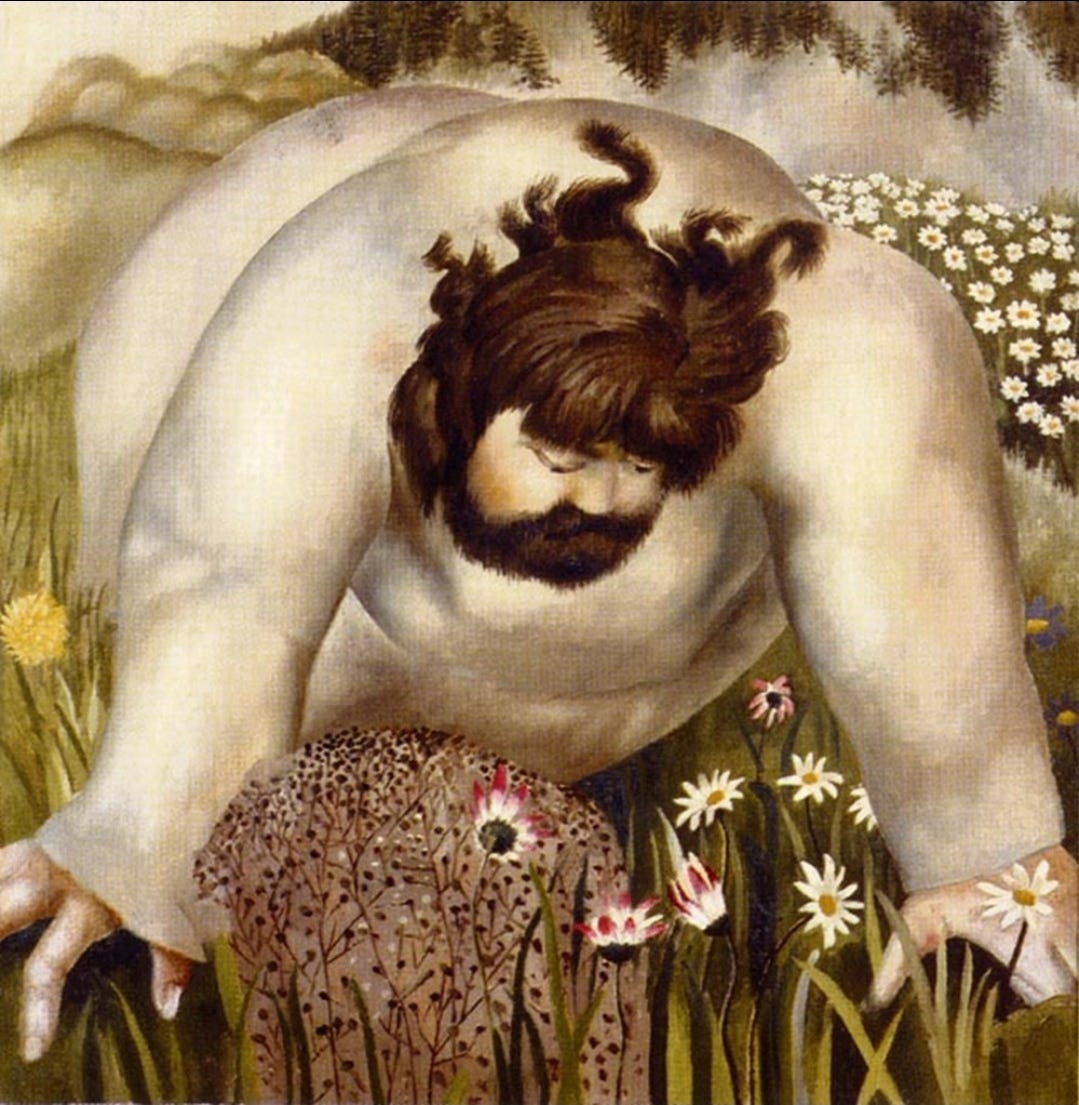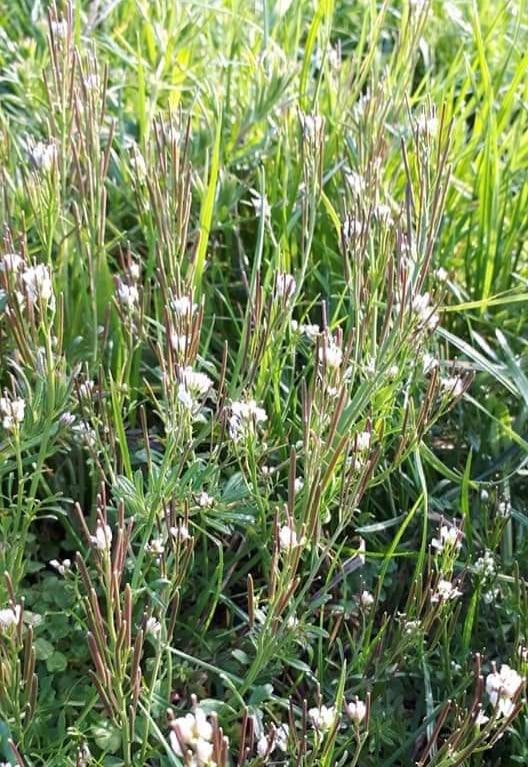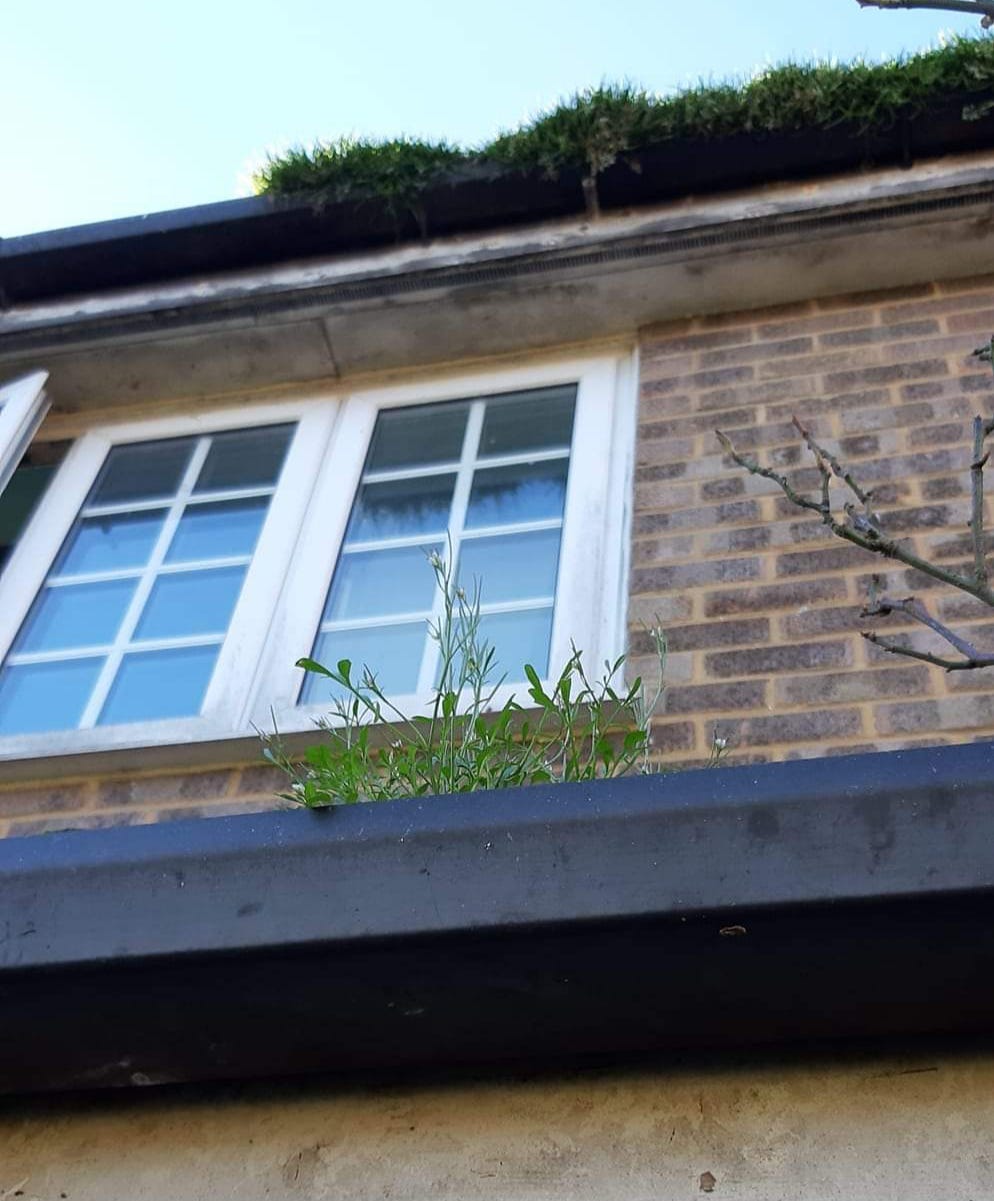Hairy Bittercress: the First Angel of Spring
This is the Wilderness We Choose, our Lenten journey, day 5
There is a hymn we sing in church on the first Sunday in Lent, ‘Forty Days and Forty Nights’;
“Forty days and forty nights
you were fasting in the wild;
forty days and forty nights
tempted and yet undefiled.
Burning heat throughout the day,
bitter cold when light had fled;
prowling beasts around your way,
stones your pillow, earth your bed…”
We are almost exclusively told in church during Lent that Jesus's time in the wilderness was something to be suffered and endured. This is an age-old story of the attempted domination of culture & 'civilisation' over the wild. It is Colonialism in action. We are taught to think in dualities; because culture is 'good' the wild must be 'bad', despite the fact that Jesus repeatedly goes into wild places to pray and to replenish, uses mud to heal, & calls upon many examples from nature in his teachings. We are taught that the wilderness is an unruly wasteland needing to be subdued. This way of thinking is to be resisted. There is, of course, a place for acknowledging that Spirit accompanies us in the harsh 'desert' places of life, but this is spring. For most of us, and for life itself, there are praise songs to be sung.
Stephen Charleston, Native American elder and former Episcopal Bishop of Alaska, writes in 'The Four Vision Quests of Jesus' that, "the New Testament is a vision quest story, an invitation to us to step into the vision quest of God. This quest is transformative." Christ goes into the wilderness not because it is a torture, but because it is a teacher. We are told in Mark 1 that, during his time in the wilderness, Jesus was 'with the wild beasts.' That is not a trial but a blessing. Dare we imagine that Christ was gathering his Council of Wise Beings, of plants, animals, & stones, to support him in the work to come? Might we use this time of Lent to gather our own, as I wrote about on Ash Wednesday?
Stanley Spencer's series of eight paintings, 'Christ in the Wilderness', depict, "a sometimes solitary, sometimes mournful, sometimes inquisitive Jesus, at home in the wilderness." Stephen Cottrell in his book on the paintings tells us that, for Spencer, "the desert is a place of encounter and discovery; the fecundity of the wilderness and Christ’s affinity with and love for the creation."
These paintings changed when Spencer was separated from his own beloved land during the first months of the Second World War, "a time when the whole world was being stripped back and Europe found itself flung into a wilderness". The images become concerned not with lily-gazing but with, "the harsh realities of privation and exile."
Maybe whether the Holy One is in a wilderness filled with flowers or one that is harsh & devoid of life is up to us? The more deeply we love and know our land and let our land love and know us, the more the desert will bloom.
"Even the wilderness and desert
will be glad in those days.
The wasteland will rejoice
and blossom with spring crocuses."
~ Isaiah 35: 1 (New Living Translation)
‘Forty Days and Forty Nights’ continues;
“So shall peace divine be ours:
Holier gladness ours shall he;
Come to us angelic powers,
Such as ministered to Thee.”
And yesterday as I sang I wondered about the ‘angelic powers’ who ministered to Jesus in the desert. What if, instead of supernatural beings, the angels he encountered were green and had leaves? And what if the Christ, who was both human and divine, the heart and matter of every cell and atom, greeted that green angel as blood kin? Truly a wild communion.
Hairy bittercress is one of the first edible green beings to emerge as winter loosens its grip. We need the hot little plants of early spring to wake and cleanse our minds & our blood after the stagnation of winter.
In her (highly recommended!) book 'The Hunter-Gatherer Way: Putting Back the Apple', Ffyona Campbell explains that, "These fiery plants come up just a few at a time. We add them to the sweet rich roots we roast in the embers and the combination of flavours is a heavenly mix of comfort and fire. As the days go on, we eat more fiery leaves and fewer comforting roots and so we are gradually woken up", and that, "The leaves and flowers of Spring are the hottest foods of the wild food year and there’s no way you can go back to sleep after eating a meal of them. They thin down the blood making it easier to pump around the body after a Winter of piling on the fat. They strip the body of cholesterol. They raise the metabolism so that we can use the energy from our food now instead of automatically storing it. They clean the blood and all the organs. They even clean the lymph system." What a gift, and freely given!
Ffyona Campbell also suggests that, as Orion the Hunter disappears from our late winter skies in early February, we will eat the last of our meat and that there won't be eggs to gather until the Spring Equinox full moon signals to the birds to lay, & so "the period of eating only leaves and flowers between the last of the meat and the first of the eggs is the origin of Lent." This is our spring fast and we need it to be well. Now, Lent becomes less of a punishment & more of a blessing. Our work at this time is not to deny but to love ourselves back to life.
I have been seeing the small, inconspicuous leaves of hairy bittercress appearing at the edges of pavements here since early January. Now, I seem to see her everywhere; even growing on top of our porch! We have several families of starlings raising their families here, & I know that starlings collect herbs to line their nests. I wonder whether hairy bittercress might be one that they like to gather, hence our newly spring-greened porch.
Hairy bittercress (Latin name, 'cardamine hirsuta, which literally means 'hairy cress'), is a member of the mustard, or cabbage, family. She begins growing from a beautiful low rosette of small rounded leaves and then sends up stalks with wavy leaves, reminiscent of rocket, with tiny four-petalled white flowers on the ends. The flowers have four stamens, which is one way of identifying hairy bittercress as other closely related plants, such as wavy bittercress, have six. Hairy bittercress is also, of course, slightly hairy but the plants are so small that it's often hard to see. But there is no need to worry too much as all the cresses are edible. Despite their tiny size, the flowers also provide important early nectar for pollinators. In the US, even though not native, they attract early butterflies, such as the spring azure & falcate orange-tip.
Excitingly, hairy bittercress employs a method of 'ballistic seed dispersal', known as ballochory or explosive dehiscence, which means that when their fruit is ripe it will explode on being touched & seeds will shoot out in all directions. I read one account of someone walking across their grass & feeling hairy bittercress seeds pinging against their ankles! Indeed, my favourite description of hairy bittercress comes from John Ryan in his book, 'Plants in Contemporary Poetry: Ecocriticism and the Botanical Imagination', who describes her as, "an unassuming and eccentric character" and says that, "hairy bittercress personifies plant intelligence... Counter to the perception of flora as passive, patient, and slow-as-molasses, bittercress deploys a ballistic seed dispersal system." He goes on to describe the way in which bittercress repels potential predators such as caterpillars by firing seed-missiles at them!
Hairy bittercress is native to Eurasia, although now naturalised throughout much of the world, & likes to grow in damp, recently disturbed soil, open ground, turf, pavement cracks, & on wasteground. I’m not sure whether it also appeared in the deserts of Jesus’s birth, but if Stanley Spencer can imagine the story of Lent and Easter unfolding in Cookham, Berkshire then we can bring it to right where we are too. Some of its common names include lamb's cress, land cress, hoary bitter cress, hotweed, spring cress, flick weed, and shot weed. Under its Old English name of 'stune', it is cited as one of the herbs invoked in the 10th century Anglo-Saxon Nine Herbs Charm. She was not then quite so inconspicuous to our ancestors, for whom ubiquity did not equal unimportance.
As for offering herself as one of our spring allies, and I would never assume, her bitterness (which is not strong) makes her a wonderful detoxifier of the liver. Although her Latin name is said to come from the Greek for 'cress', Reverend C.A. Johns, in his 1913 book 'Flowers of the Field', suggests that the genus name 'Cardamine' comes from the Greek cardio, for the heart, and damao, to fortify. Just what we need in these early spring days. The leaves (carefully washed if growing on the pavement etc) can be used in the same way that we use cress and to make pesto, salsas, and sauces, being full of vitamin C, calcium, magnesium, beta-carotene, and antioxidants.
Hairy bittercress is so small & inconspicuous that I sometimes wonder whether she comes first just to help us 'get our eye in'. Once one starts to see them they are literally everywhere, although often I have to remind myself who she is by running to my plant identification books. Somehow, she just slips from my sleepy winter mind. And so, she calls to us to be mindful, to turn from our inner winter journey just a little bit; not forging our way out into the world just yet but at least to notice the ground beneath our feet. Hairy bittercress tells us that the earth is waking, and so should we.
Weeds by Philip Pulfrey
I learn more about God
From weeds than from roses;
Resilience springing
Through the smallest chink of hope
In the absolute of concrete.
Small seeds secreted
Under man’s designings;
Roads and city plans,
The humourless utopias
Of arid dreams.
It seems God smiles:
A head of gold
So delicate yet strength enough
To bring temples to their knees In time.
What is left of Greece is the work of weeds:
A humble persistence
Of unobserved beauty
The force of life enduring
The follies of men.
References:
‘The Four Vision Quests of Jesus’ by Steven Charleston, 2015, Morehouse Publishing
‘Christ in the Wilderness: Reflecting on the Paintings of Stanley Spencer’ by Stephen Cottrell, 2012, SPCK Publishing
https://en.m.wikipedia.org/wiki/Cardamine_hirsuta
https://thegoodliferevival.com/blog/hairy-bittercress
https://www.foragingcoursecompany.co.uk/foraging-guide-hairy-bittercress
https://www.wildedible.com/bittercress
https://www.bbg.org/news/weed_of_the_month_hairy_bittercress
https://bugwomanlondon.com/2016/04/13/wednesday-weed-hairy-bittercress/
https://bugwomanlondon.com/2020/02/05/wednesday-weed-hairy-bittercress-take-two/
https://www.ediblewildfood.com/hairy-bittercress.aspx.aspx
https://www.gardeningknowhow.com/plant-problems/weeds/is-hairy-bittercress-edible.htm
https://www.wildfooduk.com/edible-wild-plants/hairy-bittercress/
https://en.wikipedia.org/wiki/Nine_Herbs_Charm
'Plants in Contemporary Poetry: Ecocriticism and the Botanical Imagination' by John Ryan
Recipes:
https://www.eatweeds.co.uk/harissa
https://www.eatweeds.co.uk/hairy-bittercress-roasted-beetroot-salad
https://www.eatweeds.co.uk/hairy-bittercress-dandelion-papaya-salad
https://huntergathercook.typepad.com/huntergathering_wild_fres/2013/01/hairy-bittercress-pesto.html









❤️ thank you
Another great read, thank you x